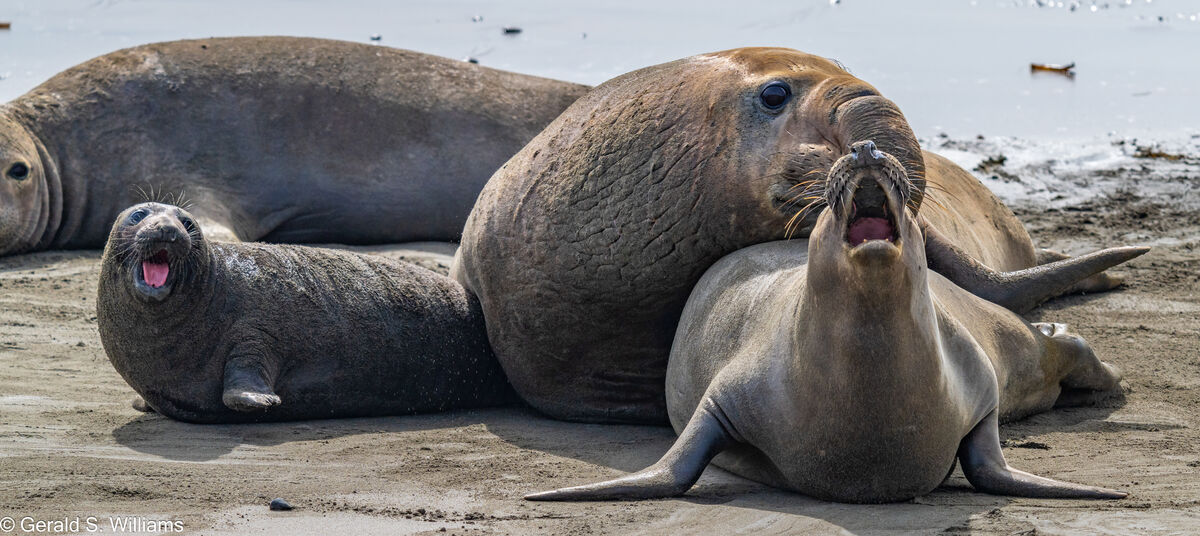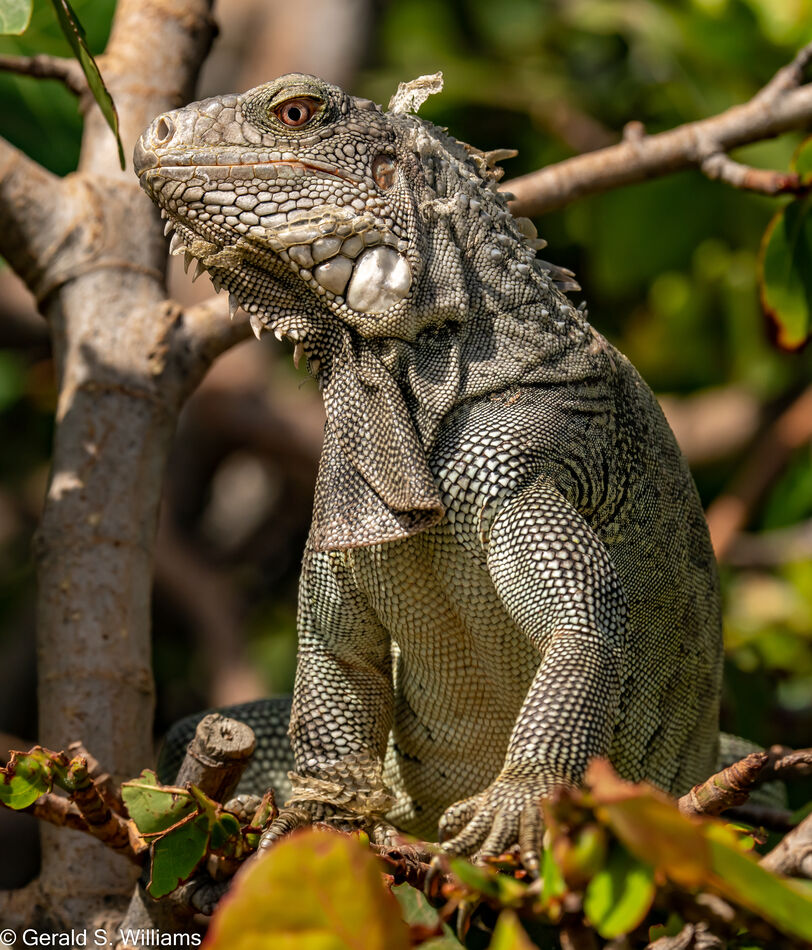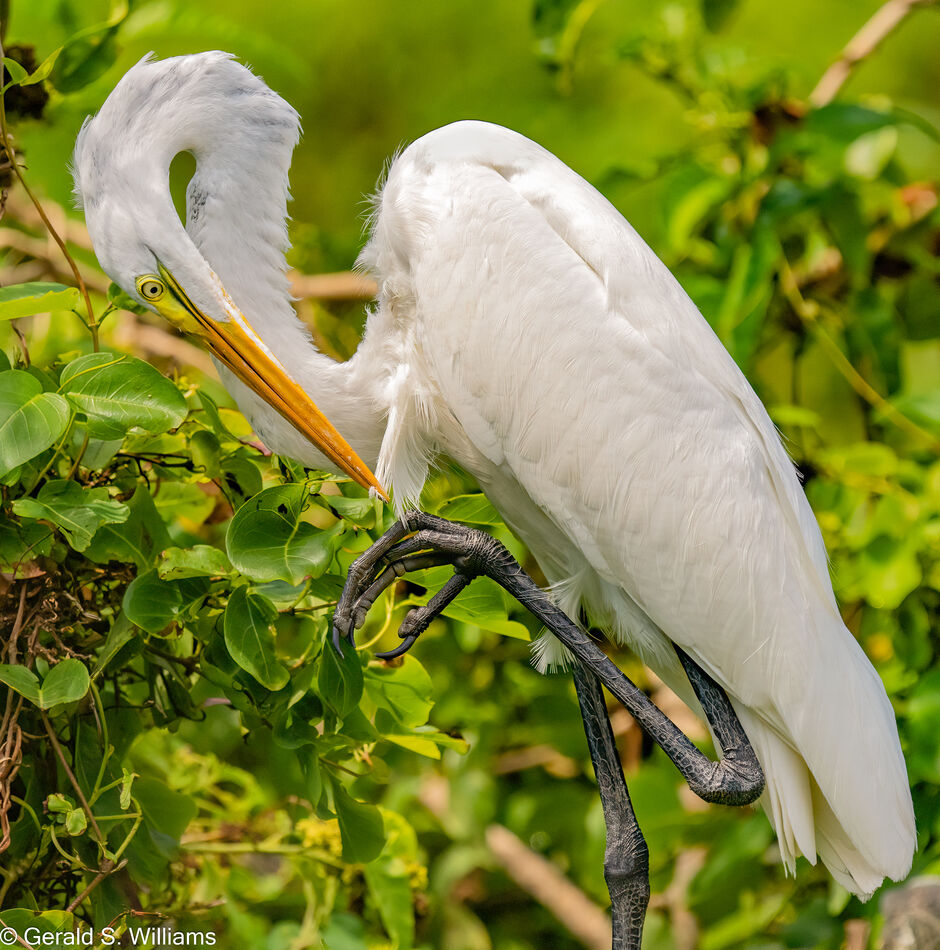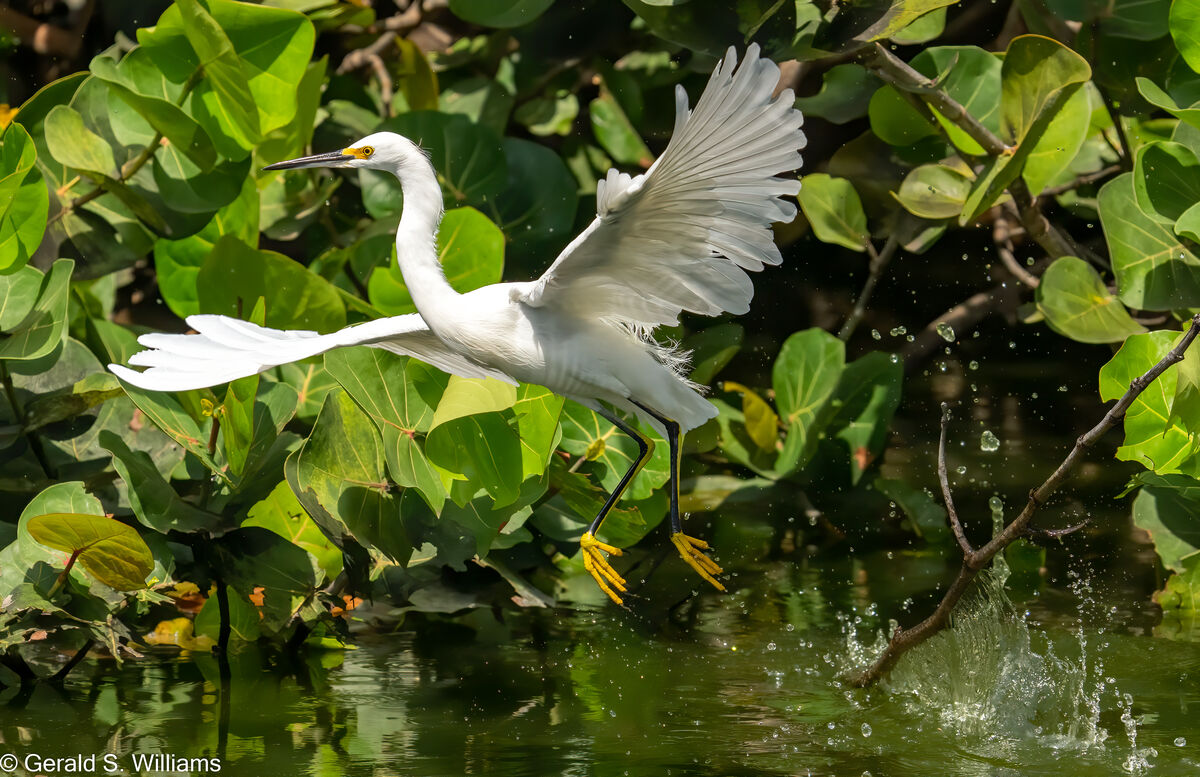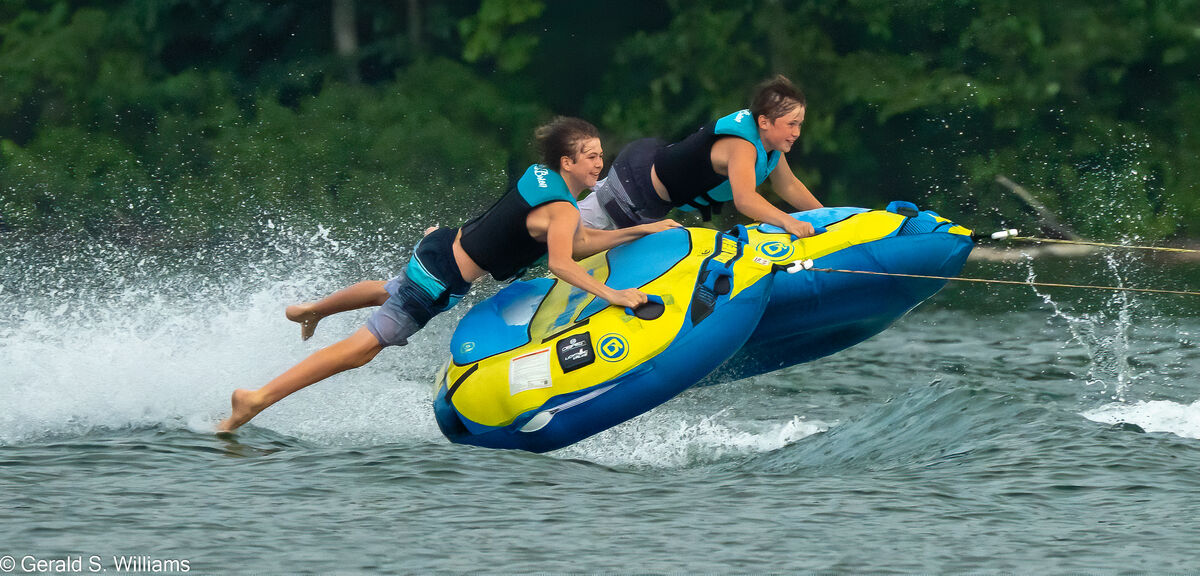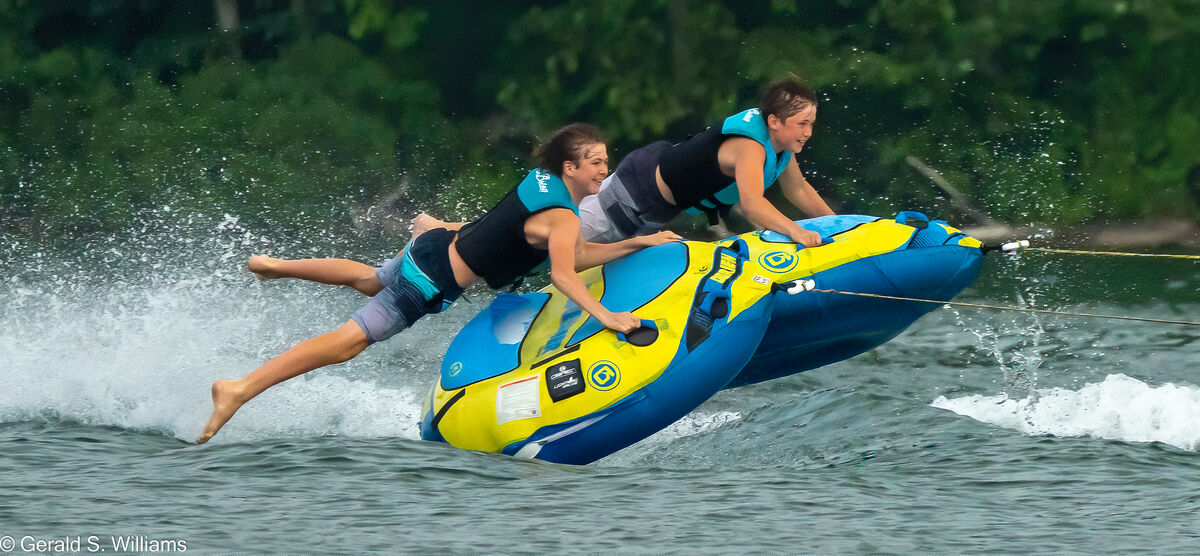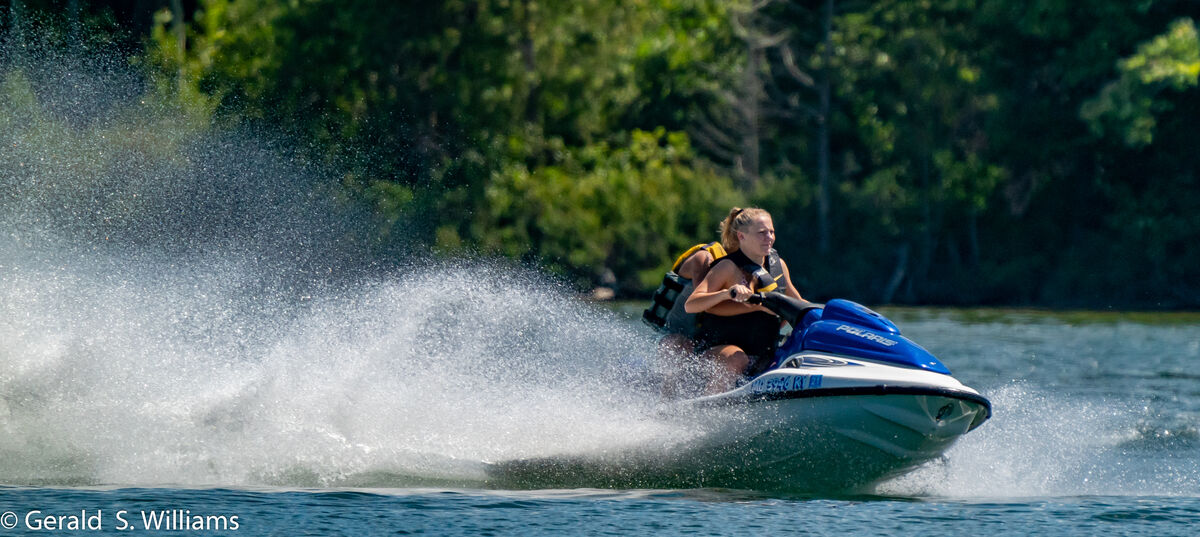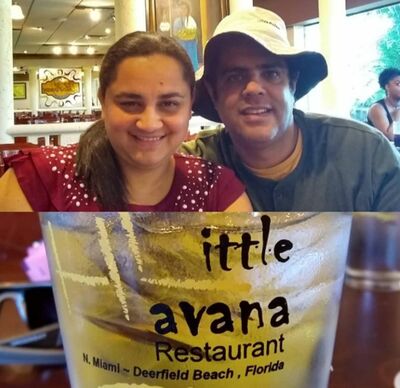What do you get for $13000 versus about $2000?
Aug 8, 2023 09:53:24 #
I strongly agree with Robert1594. Put your investment where your eyes are. The human brain is a marvel; however, poor eyesight will reduce the quality of what it is able to perceive. The best technically advanced cameras will always be reduced to the quality of the lenses attached to them. The camera sensor can only process the quality of the waves of light that strike it and when viewing at distances of hundreds of yards there are many environmental factors that come into play that a specialty lens like this is designed to address.
Of course, my world centers around subjects that are a fraction of an inch from the end of the lens so I doubt such a magnificent lens will be on my "must-have" list.
Of course, my world centers around subjects that are a fraction of an inch from the end of the lens so I doubt such a magnificent lens will be on my "must-have" list.
Aug 8, 2023 11:02:52 #
Dragonophile wrote:
Sony & Nikon & Canon put out 600mm prime l... (show quote)
I see one pro photos of birds inflight with the 600mm f4 off a Sony A? and the pics are incredible. Many times better than you will get sigma 100-600 - yes, dramatically better in my opinion. He is a pro and has likely paid for that lens many times over.
Aug 8, 2023 11:15:48 #
The Tamron 150-600+ FTZ2, will not work, on my Z9 or50 ! for less than $1100, i purchased a New Nikon 200-500 & it weighs a ton, but is far faster focusing & sharper than the 150-600 ever was on the D500. This is what is working for me. Hope this real time info helps.
Aug 8, 2023 11:39:54 #
In my world, they are two different lenses for two different purposes. If I want the best image possible, I will use my Minolta 600/4. It's a beast at 12 pounds and requires a sturdy tripod and head. But when the light is low and I want to get a "keeper", that's what I will pick over my Tamron 150-600 every time. The Tamron has its place as well. It is a hand-holdable, carry around option when I need length, but not the highest image quality. In a nutshell, the zoom is for creating usable images. The big [prime is for creating memories.
Aug 8, 2023 12:22:03 #
Sidwalkastronomy
Loc: New Jersey Shore
jerryc41 wrote:
I go for zoom and a lower price every time.
I agree totally.
I have Tamron 150-600mm G2 was $1300, and I routinely print 16x20 wall hangers.
For the possible slightly better image the extra 10 g isn't worth it.
BTY the $1300 was my first stimulus check.
Aug 8, 2023 12:59:58 #
billnikon wrote:
YOU will not see that much difference. For example... (show quote)
Bill is right here. The Prime Sony 600mm f4 GM lens is a bit sharper, and has more bokeh at f4, than the excellent Sony 200-600mm f5.6-6.3 zoom lens. But at $13K USD the Sony 600mm f4 GM is out of the range of most budgets. The $2K Sony 200-600mm f5.6-6.3 outsells the 600mm f4 GM by far, and is a better choice for most.
As a staff photographer I used the best 600mm f4 lenses from Nikon, Canon and Sony. But as a freelancer now, paying for my own gear, the Sony 200-600mm makes more sense for me. If I suddenly win the lottery, sure I might get a $13k 600mm f4 GM or $12k 400mm f2.8 GM lens, or both, LOL
More power to those who can afford them .
I currently shoot with Sony A1, A7RIV, A7SIII and I am happy with the results of my $2K Sony 200-600mm lens. And in many ways it is more versatile as I can quickly zoom out from 600mm to a lesser focal length , which I cant do with a 600mm prime lens.
1) A Wild Elephant Seal Rookery along the Pacific Ocean coast of California, USA. A pup squeals as it gets squeezed by a 5000 pound bull going after one of its cows. Luckily this time the pup survived , then dont always. Sony A7RIV, Sony 200-600mm lens, 600mm ISO 400, f6.3, 1/2000 sec. handheld.
2) A Wild Iguana on the Caribbean island of Sint Maarten/ St. Martin. Sony A1, Sony 200-600mm lens, 493mm, ISO 320, f8, 1/1250 sec. handheld.
3-4) A Great White Egret bends its neck to clean its feathers on the Caribbean Island of Sint Maarten/St. Martin. First the full frame, than a tight crop from the same shot. Sony A1, Sony 200-600mm lens, 591mm, ISO 1600, f6.3, 1/2000 sec. handheld.
5) A Snowy Egret takes off from its watery perch on island of Sint Maarten/St. Martin. Sony A1, Sony 200-600mm lens. I was tracking the Egret at 600mm when I realized it was about to take off, and I could quickly zoom back out to 319mm and get the Egret and all the water it kicked up on takeoff. I could never have gotten all that with a 600mm prime , and there was no room or time for me to have backed up with my feet. 319mm, ISO 1600, f6.3, 1/4000 sec. handheld.
6-7) Kids being pulled by a fast speedboat on Brookings Lake, Manistee National Forest, Michigan, USA. First two frames from a short 30fps burst. Sony A1, Sony 200-600mm lens, 600mm, ISO 1000, f8, 1/2000 sec. handheld. Cropped in about 50% here.
8) Famed Monument Valley, scene of countless movies, TV shows, commercials, Navajo lands, Arizona/Utah Border, USA. Sony A7RIV, Sony 200-600mm lens, 207mm, ISO 400, f6.3, 1/500 sec. handheld.
9) Three buddies watching the sun set over the Pacific Ocean at Venice Beach, California, USA. Sony A7RIV, Sony 200-600mm lens, 359mm, ISO 400, f.3, 1/2000 sec. handheld.
Click on download to see better image quality of each shot.
I am not missing excellent shots by choosing to use a $2K USD Sony 200-600mm lens vs a $13K USD Sony 600mm f4 GM lens.
Use what you love, and what you can afford and be happy.
Cheers and best to you all.
Aug 8, 2023 13:17:01 #
One additional option has already been suggested, a prime 300 mm lens and a 2x teleconverter will give you 600 mm to play with. And the quality of that combination should be in the same neighborhood as a 200-600 zoom.
Consider this analogy: a zoom lens design is essentially a main lens with the equivalent of the glass from a tele extender mounted behind it. Changing the spacing between the components changes the focal length, but can’t change certain optical properties.
For example, the diameter of the front element doesn’t magically grow. If it is made 75mm in diameter and then is used at 300 mm focal length, the maximum aperture will be f/4 (or 300/75=4), but if the image is optically magnified so that this works like a 600 mm lens then it will pass no more light than f/8 (600/75=8). It will also act like an f/8 in other ways. The depth of field will be exactly the same as any other 600 mm lens set at f/8, so any focusing systems will need to deal with the reduced brightness and the increased depth of field—both conditions which make critical focusing more difficult.
With a zoom, the magnifying elements are always there. With a prime lens and a teleconverter, when you remove the teleconverter you have the (sharp) prime lens, with no extra glass. And adding the teleconverter adds exactly the same, known quantity, every time. Even better if the teleconverter was designed to work with that particular lens.
Generally what you get with an expensive prime lens is a greater maximum aperture than you get with a less expensive zoom.
The image circle produced by long focal length lenses is huge. At 300 mm focal length and above, it is really huge! Lens of this focal length can often cover 8”x10” film (a diagonal measure of about 305 mm) Even a full-frame sensor uses just the center 43 mm of that, so the image you use should be coming from the sharpest center of that lens. Problems of lens design that typically show up more in the corners of the image, may be happening, but they are only seen hundreds of millimeters away from what she camera is capturing. So, except for academic interest—who cares about them? You might get some added flare, or reduced contrast from the extra glass, and internal reflections, but otherwise it is going to be difficult to see much difference.
The zooms will be physically shorter, which may make them more convenient, both to carry and to use. They also add the convenience of letting you zoom out, useful when you get a bit too close, or something moves directly towards you. If you save thousands of dollars in the process, it sounds like a winner.
Consider this analogy: a zoom lens design is essentially a main lens with the equivalent of the glass from a tele extender mounted behind it. Changing the spacing between the components changes the focal length, but can’t change certain optical properties.
For example, the diameter of the front element doesn’t magically grow. If it is made 75mm in diameter and then is used at 300 mm focal length, the maximum aperture will be f/4 (or 300/75=4), but if the image is optically magnified so that this works like a 600 mm lens then it will pass no more light than f/8 (600/75=8). It will also act like an f/8 in other ways. The depth of field will be exactly the same as any other 600 mm lens set at f/8, so any focusing systems will need to deal with the reduced brightness and the increased depth of field—both conditions which make critical focusing more difficult.
With a zoom, the magnifying elements are always there. With a prime lens and a teleconverter, when you remove the teleconverter you have the (sharp) prime lens, with no extra glass. And adding the teleconverter adds exactly the same, known quantity, every time. Even better if the teleconverter was designed to work with that particular lens.
Generally what you get with an expensive prime lens is a greater maximum aperture than you get with a less expensive zoom.
The image circle produced by long focal length lenses is huge. At 300 mm focal length and above, it is really huge! Lens of this focal length can often cover 8”x10” film (a diagonal measure of about 305 mm) Even a full-frame sensor uses just the center 43 mm of that, so the image you use should be coming from the sharpest center of that lens. Problems of lens design that typically show up more in the corners of the image, may be happening, but they are only seen hundreds of millimeters away from what she camera is capturing. So, except for academic interest—who cares about them? You might get some added flare, or reduced contrast from the extra glass, and internal reflections, but otherwise it is going to be difficult to see much difference.
The zooms will be physically shorter, which may make them more convenient, both to carry and to use. They also add the convenience of letting you zoom out, useful when you get a bit too close, or something moves directly towards you. If you save thousands of dollars in the process, it sounds like a winner.
Aug 8, 2023 13:26:22 #
[quote=kymarto]It's not so much that the final image is that much better, especially at f8 or so. What you are paying for is the larger aperture, better stabilization, better AF, and much better build quality. If you don't need those, the cheaper option will serve.[/quote. And your back will be much happier
Aug 8, 2023 13:32:00 #
MrPhotog wrote:
One additional option has already been suggested, ... (show quote)
Yes, the option of going with a 300 prime and 2X TC, while it gets you to 600mm basically loses the advantages of both the 600 prime and the zoom.
Aug 8, 2023 13:48:19 #
Most photographers do not Need a 13,000 lens.
Some do.
What you are paying for is a dead sharp, large aperture, super fast AF lens, with relatively low production runs. All that stuff costs money.
Similarly nearly every manufacturer makes a 70- 200 in f/4 & f/2.8 and the extra stop costs you about 1k.
If you don't need f/2.8 you can save the money.
As you go out in focal length the extra f/stops cost considerably more, (and there is also ruggedness ,7 faster AF)
So it is pretty simple, you buy what you need and can afford.
But to try to say, the more expensive lenses are no better and not worth it, is silly.
If that were true no one would buy them.
What you can say is' It's not worth it to me'.......and that is perfectly fine
Some do.
What you are paying for is a dead sharp, large aperture, super fast AF lens, with relatively low production runs. All that stuff costs money.
Similarly nearly every manufacturer makes a 70- 200 in f/4 & f/2.8 and the extra stop costs you about 1k.
If you don't need f/2.8 you can save the money.
As you go out in focal length the extra f/stops cost considerably more, (and there is also ruggedness ,7 faster AF)
So it is pretty simple, you buy what you need and can afford.
But to try to say, the more expensive lenses are no better and not worth it, is silly.
If that were true no one would buy them.
What you can say is' It's not worth it to me'.......and that is perfectly fine
Aug 8, 2023 14:42:11 #
Dean37
Loc: Fresno, CA
[quote=Robertl594]I have always been of the belief that one should put their money into their glass, especially now that the cameras are pretty much all good. I am also guilty of spending the money for the pro long lenses. Here is my rationale:
IQ is extremely important. Fast glass is very important, focusing speed, and resolving power is critical. Without these qualities, you are compromising your ability to eliminate marginal.
One important thing I have noticed, is that each of these lenses comes with a learning curve. Don’t expect that just because you invest tons of money on piece of equipment, it will instantaneously solve the problems and make you a great photographer. While it certainly does greatly enhance the output and ability to capture those great images, knowing how to use them is a critical part of the equation. I have a beautiful set of golf clubs, and I still can’t break 100! (On 18 holes, I’m not that pathetic 😂). (Edited of course!)
*******
I see a problem developing with the $13,000.00 lens becoming an obsession. Looking at potential differences will cause this. Maybe it's better to forget about the $13,000.00 lens, and use the current lens until it doesn't do what you need, then look at changing.
RobertI594, I sold my golf clubs and quit the sport because I couldn't break 128 (I am pathetic, because that was on the first 9 holes!)
IQ is extremely important. Fast glass is very important, focusing speed, and resolving power is critical. Without these qualities, you are compromising your ability to eliminate marginal.
One important thing I have noticed, is that each of these lenses comes with a learning curve. Don’t expect that just because you invest tons of money on piece of equipment, it will instantaneously solve the problems and make you a great photographer. While it certainly does greatly enhance the output and ability to capture those great images, knowing how to use them is a critical part of the equation. I have a beautiful set of golf clubs, and I still can’t break 100! (On 18 holes, I’m not that pathetic 😂). (Edited of course!)
*******
I see a problem developing with the $13,000.00 lens becoming an obsession. Looking at potential differences will cause this. Maybe it's better to forget about the $13,000.00 lens, and use the current lens until it doesn't do what you need, then look at changing.
RobertI594, I sold my golf clubs and quit the sport because I couldn't break 128 (I am pathetic, because that was on the first 9 holes!)
Aug 8, 2023 14:47:03 #
MJPerini wrote:
Most photographers do not Need a 13,000 lens. br S... (show quote)
The top News Services like Associated Press, Canadian Press, UK's Top News service, and all Gannett media including USA Today have gone exclusively to Sony mirrorless gear for all their staff photographers and for all their staff videographers, worldwide. I know many of the AP staffers, as I used to shoot for them. . In their kits they have been supplied with both 600mm f4 GM and 200-600mm lenses, as each has its uses.
If you get a chance to look at the photogs covering any Major League Sport and Olympics, you will see top shooters using both the long primes and the long zooms.
Top Wildlife shooters like Mark Smith own and use both the Sony 600mm f4 GM and Sony 200-600mm f5.6-6.3 lenses for stills and videos. Actually Mark uses his Sony 200-600mm more than his beloved 600mm f4 GM when doing video in the field, as it gives him more focal lengths to quickly choose for more options for video framing.
https://www.youtube.com/@MarkSmithphotography/videos
Two early vids when the A1 and 200-600mm first came out. Note; early A1 glitches that Mark mentions have long ago been fixed with firmware updates.
https://www.youtube.com/watch?v=bPBLIRlMN-8
https://www.youtube.com/watch?v=gB1PR3GG3OA&t=529s
FYI, the Sony 200-600mm also takes the excellent Sony 1.4 and 2X TCs for 840mm and 1200mm focal lengths if needed. Here a jestskier on Brookings Lake in Manistee National Forest, Michigan, USA. Sony 24mp A9, Sony 200-600mm lens and Sony 2X extender, at 1200mm focal length. Yes using the TCs on a top prime $13k lens will give a bit better final IQ, but the TCs are still very usable on the $2k 200-600mm lens.
Nikon's new Z-mount 180-600mm f5.6-6.3 lens is getting excellent first real-world test reviews. Nikon is pricing it at $1700 USD. Canon presently has no RF-mount 180-600mm or 200-600mm lens at all. Neither Nikon, Canon, or Sony will stop making and selling their expensive best prime 400mm f2.8, and 600mm f4 lenses . There will always be photographic needs for them. But all lens makers, OEM and third-party, realize there is a great and lucrative market for affordable, yet quality long zooms.
Cheers and best to you.
Aug 8, 2023 14:57:24 #
If you can afford a $13K lens, then the decision is yours. Just buy it.
If not, you have two avenues of action. (1) Put up with using the lesser lens (if it is indeed so). (2) When the time comes when the $13K lens is a NEED, rent it. That is what rental companies are for. You can have the use of the lens when needed but you don't need to diminish your capital to do that.
My personal opinion is that if you are an amateur and receive no remuneration for your images, then you don't have a NEED for that lens. If you can afford it and are obsessed with it, you can justify buying it even if you don't make money from your images. In that case, need is irrelevant.
If not, you have two avenues of action. (1) Put up with using the lesser lens (if it is indeed so). (2) When the time comes when the $13K lens is a NEED, rent it. That is what rental companies are for. You can have the use of the lens when needed but you don't need to diminish your capital to do that.
My personal opinion is that if you are an amateur and receive no remuneration for your images, then you don't have a NEED for that lens. If you can afford it and are obsessed with it, you can justify buying it even if you don't make money from your images. In that case, need is irrelevant.
Aug 8, 2023 15:10:40 #
Robertl594 wrote:
I have always been of the belief that one should p... (show quote)
Thanks , that was interesting
Aug 8, 2023 15:59:32 #
If you want to reply, then register here. Registration is free and your account is created instantly, so you can post right away.



